From the Archives – Originally posted June 21, 2008
Hell In A Box is a relatively simple project that took a surprisingly long time to complete. The idea for the project came from Seven Graylands, who mentioned being interested in combining multiple effects pedals into a single rackmount unit. I thought that was a mighty fine idea, in some applications, and being that I’m always up to my eyeballs in pedals I’m not using, I decided to give the idea a shot.
For the sake of simplicity, I opted to use only DOD pedals for this first project (being that they all use similar plug-style AC input, with the same polarity). And so I dug around and found three distortion pedals. The original idea then evolved into making a rackmount distortion box to rival any single pedal I had.
When reviewing my options, I considered how I would route the effects. It didn’t make much sense to have everything in series, because that would be the same as just putting them on a pedal board. I also didn’t want a completely parallel system, either, because that wouldn’t allow for the totally obliterated sound you get from running distortion on an already distorted signal. In the end, I decided to run the Overdrive in series with a Metal Maniac, and that would run in parallel with a Supra Distortion (originally a Thrash Master that got hosed in the mounting process).
There were a number of logistical hurdles to overcome, but nothing particularly taxing. I would recommend anyone attempting a similar project be mindful of the original wiring. These things aren’t manufactured to be disassembled and manhandled. The majority of my wiring headaches were from factory wires breaking off and me not knowing where they belonged when I discovered them.
And label EVERYTHING.
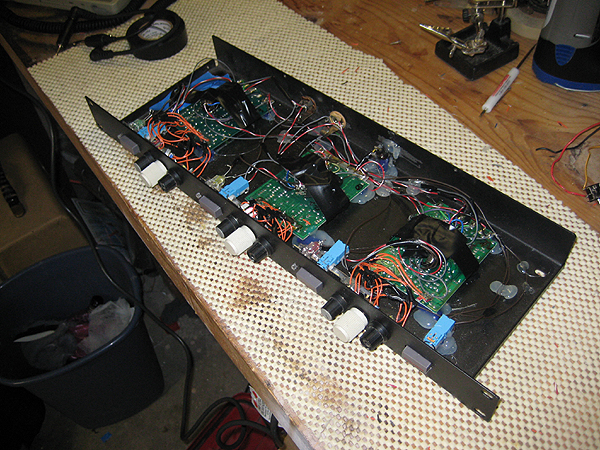
Here is an overview of the inside. There are about ten sticks of hot glue inside of this box, securing everything in place. At first I intended to cut off and discard the input and output jacks, but ultimately I decided it would be a bigger pain to rewire everything than it would be to simply leave them and just tape them down out of the way. That way I could simply wire to the jacks, instead of having to rewire all the ground connections etc. Another note, I was able to ground the input jacks, which allows me to turn the power on without having anything physically plugged into the input jack. Which was a relief…
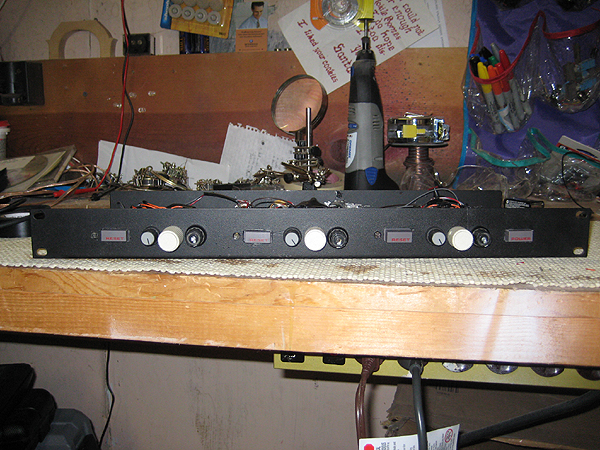
The front panel. Again, my awesome skills at drilling and cutting are apparent here. If I had as much sense as I’d like to think I have, I would have left more room between the pots, to allow for more clearance between the knobs. But I’m a dolt and didn’t take that into consideration. At least the rockin’ NES buttons work like a charm.
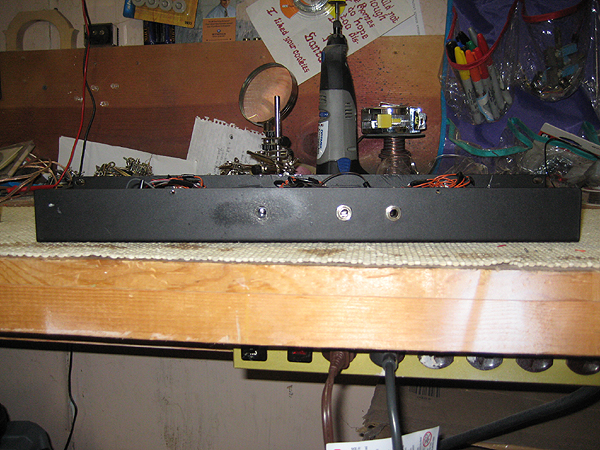
The rear panel. Not the sexiest rear I’ve ever seen, but it’s functional. One input, one output and the DC input. I ditched the DOD-style plug jack in favor of a more standard barrel jack.
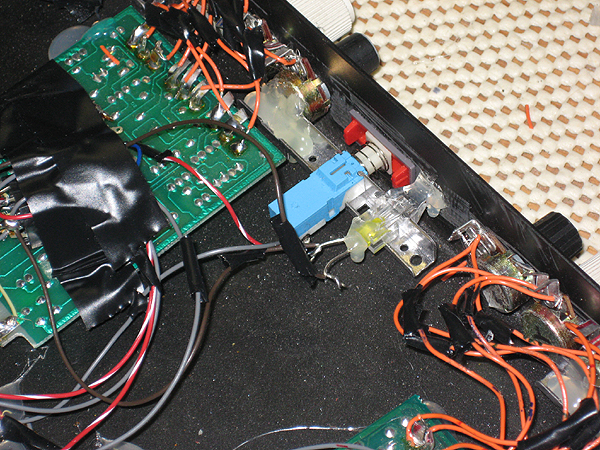
Some detail of the NES button. I didn’t have a decent way to mount these, so I ended up leaving them on their original mounting brackets, which I glued to the back of one of the pots. This is not an ideal solution, but I had to compromise my ideals on a lot of this design.

A close shot of the biggest pain in the ass about this whole project: rewiring the pots. Granted it wasn’t hard work, in the least, just tedious and time-consuming.
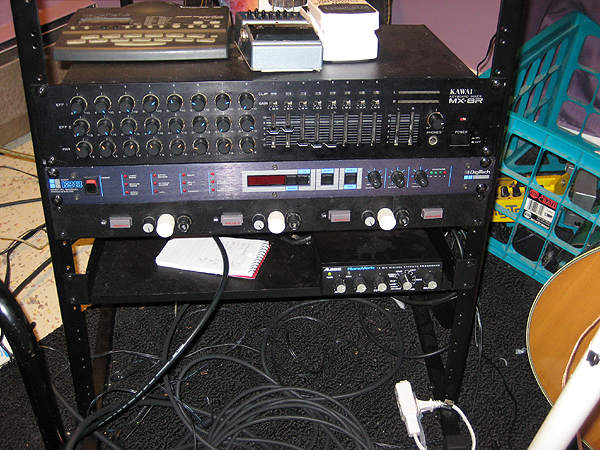
Hell In A Box in it’s new home. In my original imagining, I had hoped to find some clever DIY solution for the enclosure, but couldn’t find anything that was cost effective and logical. So I ended up buying an enclosure and spending way more money than I wanted. The one upside is that the top lid of the enclosure has rack ears, so I opted to leave the lid off, flip it over and use it as a shelf for my Alesis NanoVerb (as pictured above). It saves me from having to buy a shelf, and therefore makes the expenditure a little easier to bear.
Overall it was a fun project. The results are rewarding, but not exactly as amazing awesome as I’d hoped. If I do something like this again, I’ll do it with multiple types of effects and have a completely modular routing interface using a patchbay. IF I do something like this again.
follow up needed.
would like to know how this sounds too.
You know. I don’t think I ever got any sound samples of this. Currently it’s sitting on a shelf in need of some TLC — apparently the hot glue option wasn’t as long-lived as I had hoped when I started the project. I’ve been meaning to revisit the device, get it functional and re-incorporate it into my rig, but haven’t gotten around to it. Perhaps this will provide the impetus needed.
Check back in a week or two.
you should start your own souynd libaray